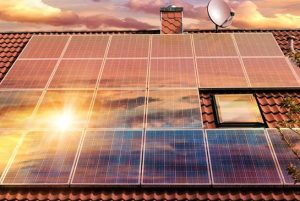Exploring Solar Panel Color Variations
The quest for renewable energy solutions has primarily focused on efficiency and sustainability, with aesthetics often taking a backseat. However, as solar technology advances and integrates more seamlessly into our daily lives and the built environment, the color of solar panels has become an area of growing interest and innovation. This exploration into solar panel color variations reveals not only an intersection of technology and design but also how these variations can impact efficiency and application.

Traditional Solar Panel Colors
Historically, solar panels have been predominantly blue or black. These colors are directly related to the materials and manufacturing processes used in solar panel production.
- Blue Solar Panels: These are typically polycrystalline silicon panels. The blue hue results from the reflection of light off the silicon fragments within the panel. These panels are more cost-effective but slightly less efficient than their black counterparts.
- Black Solar Panels: Made from monocrystalline silicon, these panels offer a sleek look and higher efficiency. The black color comes from the pure silicon used, which absorbs more sunlight.
Innovative Color Technologies
The demand for more aesthetically pleasing solar solutions has led to innovations in solar panel colors. Researchers and manufacturers are experimenting with various materials and coatings to produce panels in a broader spectrum of colors without significantly sacrificing efficiency.
- Colored Solar Panels: Through the use of light-selective coatings, solar panels can now be produced in a range of colors. These coatings can reflect certain wavelengths of light while absorbing others, allowing for the production of red, green, yellow, and even patterned solar panels.
- Transparent Solar Panels: One of the most exciting developments is the creation of transparent or semi-transparent solar panels. These panels, which can be used in windows and facades, offer new possibilities for integrating solar power into buildings and urban structures.
Efficiency vs. Aesthetics
While colored and transparent solar panels offer greater versatility in design, there is often a trade-off with efficiency. Traditional black monocrystalline panels still lead in terms of converting sunlight into electricity. However, the gap is narrowing as technologies advance. For many applications, the slight decrease in efficiency may be worth the aesthetic and design benefits that colored or transparent panels provide.
Solar panel color variations represent an exciting area of development in solar technology. As the options for solar panel colors expand, the potential for their application grows, allowing solar installations to blend more seamlessly into architectural designs and natural environments. The future of solar energy is not only bright but also colorful, offering a blend of performance, sustainability, and aesthetic appeal that can cater to a wide range of preferences and requirements.
